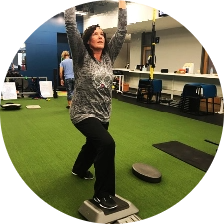Services
Carpal Tunnel Syndrome Therapy

Carpal tunnel syndrome or CTS is the most common of the entrapment neuropathies.
These are conditions that arise from compression or irritation of the peripheral nerves as they pass through narrow spaces in the body. CTS affects anywhere from three to six percent of the general population.
The risk of developing CTS in people with diabetes can reach up to 84 percent.
The carpal tunnel is the narrow pathway in the wrist that protects the median nerve and flexor tendons that enable the thumb and the fingers to bend.
CTS occurs when the median nerve is compressed in the wrist where it is supposed to be protected by the carpal tunnel. This causes pain, tingling, and numbness in the hand and up to the arm.
Other symptoms of CTS can include:
- Shock-like sensations in the hand and fingers.
- Weakness or clumsiness in the hand.
- Pain that can reach up to the forearm and even the shoulder.
With early diagnosis and the right carpal tunnel syndrome therapy, symptoms can be alleviated.
Without proper treatment, CTS can lead to permanent nerve damage and symptoms may be exacerbated. In these cases, surgery may be needed to relieve pressure off of the median nerve.
Why You Suffer
One or more factors can increase the likelihood of developing CTS. Studies have found that older people and women have a higher risk of getting CTS.
CTS can also be attributed to the following causes:
- Repetitive hand use – Overuse of the hand and wrist, doing the same motions can irritate and inflame the flexor tendons. These tendons then take up more space in the carpal tunnel, effectively squeezing the median nerve.
- Hand and wrist position – Activities that force the use and flexion of the hand and wrist in a stressful manner for an extended period of time can put pressure on the median nerve causing irritation.
- Health conditions – As mentioned earlier, diabetes increases the risk of developing CTS. This is also true for other conditions such as thyroid gland imbalance and rheumatoid arthritis.
- Hereditary – Some individuals were born with smaller carpal tunnels, or they may have other anatomical differences that alter the space in the wrist passageway. These traits can cause CTS and can be hereditary.
- Pregnancy – Certain hormonal changes during pregnancy can increase the likelihood of swelling in this part of the wrist and eventually lead to CTS.
Traditional Treatments for Carpal Tunnel Syndrome
Most people with CTS will experience symptoms that become gradually worse over time if they do not receive the right treatment. This is why early diagnosis is necessary.
Depending on the extent of the condition, doctors may recommend either nonsurgical or surgical treatment options.
Nonsurgical
- Splint – Doctors sometimes recommend wearing a splint or a brace when the patient goes to sleep to avoid flexing the wrist during the night. This neutral position helps relieve pressure off of the median nerve. In some cases, patients are also advised to wear the brace even during the day.
- Nonsteroidal anti-inflammatory drugs – Medications like naproxen or ibuprofen are recommended to alleviate pain and reduce swelling of the tendons, reducing pressure on the nerve.
- Activity changes – Doctors may also recommend avoiding the activities that cause pain and therefore worsen the symptoms. This is generally associated with wrist positions that add pressure to the carpal tunnel. The patient may have to modify their workstation.
- Steroid injections – Cortisone injections are sometimes prescribed by doctors to reduce inflammation and relieve painful symptoms. These are especially useful in cases when symptoms have flared up. Doctors may also use this injection to diagnose CTS.
Surgical
- Open carpal tunnel release – An incision is made in the palm of the patient’s hand. The doctor then divides the transverse carpal ligament to increase the size of the pathway and reduce pressure on the median nerve.
- Endoscopic carpal tunnel release – The doctor makes one or two incisions where an endoscope is used to see inside the wrist. The transverse carpal ligament is then divided by a special knife to relieve pressure from the median nerve.
Superior Physical Therapy
Unfortunately, traditional treatments may address the pain and other symptoms, but not necessarily deal with the underlying cause of carpal tunnel syndrome which may be located elsewhere in the body. Because of this, symptoms will likely recur.
Our Superior Method identifies the root cause of pain to better develop a treatment plan that may include the following procedures:
Heat and Cold Packs
Heat and cold packs alter the circulation to alleviate pain. Heat packs also relax the muscles and promote tissue healing. Cold packs reduce swelling, relieving pressure on the nerve. One or both may be recommended.
Deep Muscle Stimulation
The lymphatic flow and overall circulation is improved with the help of deep, penetrating mechanical vibrations on the muscle. This procedure also facilitates tissue regeneration.
Dry Needling
Monofilament needles are used to trigger local muscle contractures to alleviate pain safely. Dry needling is especially effective against musculoskeletal pain.













